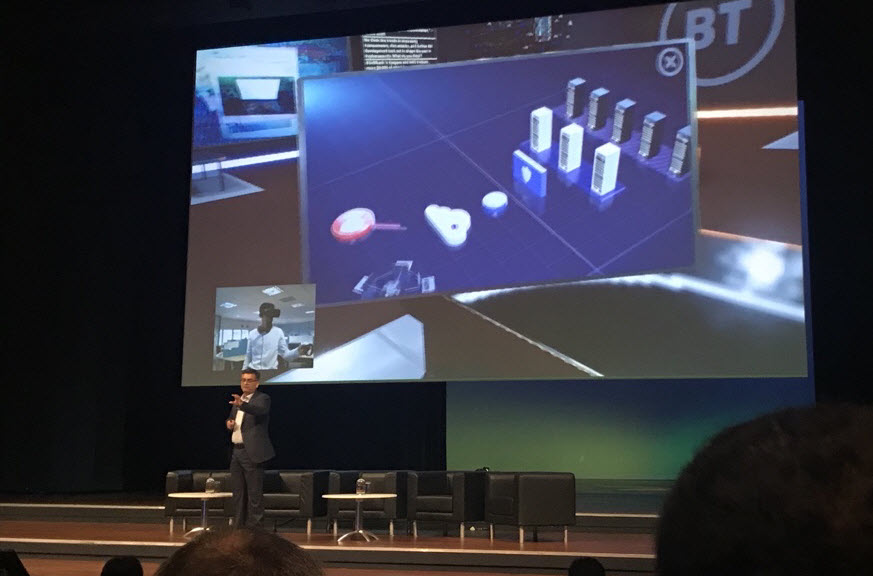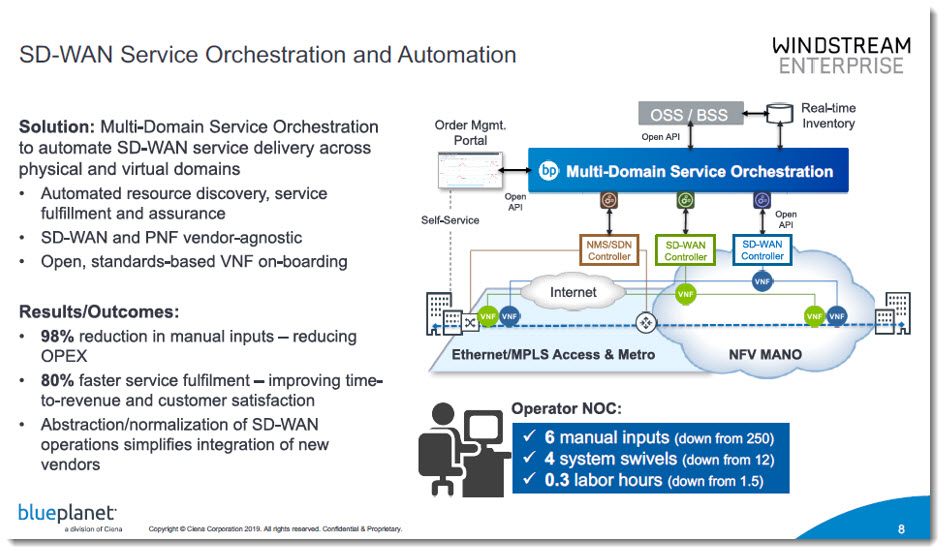Move over technology, it’s all about customer experience
SDN and NFV are now well-accepted technologies in the networking sector. No longer is there a question of what and why, but rather how and how fast. The tone was set in the opening keynotes at SDN & NFV World Congress 2019 – SDN and NFV technologies exist to enable customer applications that deliver superior experiences. To that end, SDN and NFV serve to provide customers with four key capabilities: connectivity, security, visibility, automation. It is the unique combination of these capabilities that defines a differentiated service offering.

Figure 1: Verizon’s Victoria Lonker outlines the trends driving “SDN 2.0”
It is widely recognized that, to date, SD-WAN has emerged as the “killer app” enabled by SDN and NFV, adopted by enterprises worldwide. It provides centralized, simplified network policy configuration and management so that users can be connected to their remotely-hosted applications intelligently and most efficiently, leveraging public broadband connections to simplify access to the WAN and public data centers / cloud. This supplants the more rigid and expensive MPLS services and private data centers. The net result is lower IT and operational costs for the enterprise. Not only have service providers have been quick to offer SD-WAN to their business customers, but also large enterprises have embarked on their own initiatives. Case in point is Facebook’s SDN Express Backbone.

Figure 2: Sandeep Hebbani of Facebook discusses the benefits of SDN for WAN
What are other services? There is talk of merging SD-WAN with SD-LAN to create the “SD-branch”. In this way, the benefits of SDN would be extended to include intelligent and automated management and connectivity within the enterprise itself. Virtualization has enabled NaaS applications, leveraging vCPE and uCPE for quick and easy deployment and activation of value-add services, such as firewall and DNS, at customer premises.
What’s next? Certainly, the young kid on the technology block is 5G. In conjunction with SDN and NFV, 5G enables a broad suite of still-to-be-defined services. These include sensor-based inventory control, AR/VR, high-def video streaming, tele-healthcare, smart city and other IoT applications.
In addition to enabling net-new customer services, SDN and NFV also have the potential to transform the service provider’s operational environment, driving higher service reliability and performance.
Furthermore, when one adds Multi-access Edge Compute (MEC) to the technology mix, those services can be enhanced for an even greater customer experience. Think low-latency applications, such as gaming. Such premium services provide increased monetization opportunities for the service provider. Edge compute could also be leveraged in the uCPE use case, to provide elastic scalabilty for additional virtualized functions, dynamically when needed.
In addition to enabling net-new customer services, SDN and NFV also have the potential to transform the service provider’s operational environment, driving higher service reliability and performance. This not only benefits the service provider by increasing operational efficiencies, but also improves customer experience. Especially when integrated with AI technologies, service providers have the means to assure higher levels of service quality for new or legacy services. One example is network health prediction. Another example is BT’s cybersecurity initiative which uses machine learning (ML) to classify security threats and vulnerabilities, in order to stay ahead of them. Innovative visualization allows for effective centralized operations.

Figure 3: BT’s Ben Azvine shows the concept of a “virtual security operations center”
Now, it is one thing to discuss potential services and another thing to implement them across a complex network and operational environment. A service offering rollout and ongoing management requires coordination across multiple functions within a service provider’s organization, including product development, IT operations, customer support, network planning, and network engineering. Each function has its own software tools and systems.
To streamline and accelerate the workflows between these functions, in order to effectively plan, fulfill and assure services, requires automation. Such automation is possible due to SDN’s open API paradigm, which enables interoperability between multi-vendor operational systems and multi-vendor infrastructure. Service providers have been able to realize tangible benefits of automation, as highlighted by example deployments of Blue Planet’s intelligent automation portfolio.

Figure 4: As presented by Blue Planet’s Kailem Anderson – Windstream has improved customer experience for their SD-WAN services, and reduced OPEX, through automation
When the concepts of SDN and NFV were introduced, they were considered disruptive to the networking industry; however, only time could tell whether they would survive beyond the hype and move along the adoption curve. It has taken a number of years, but it is now apparent that SDN and NFV have reached maturity and have become the foundational technologies on which modern-day, on-demand, high-bandwidth services can be built, delivered and managed. With the emergence of other technologies, such as 5G, cloud, and edge compute, there are ever more possibilities for differentiated service offerings with elevated customer experience. That’s good news for service providers and customers alike.
